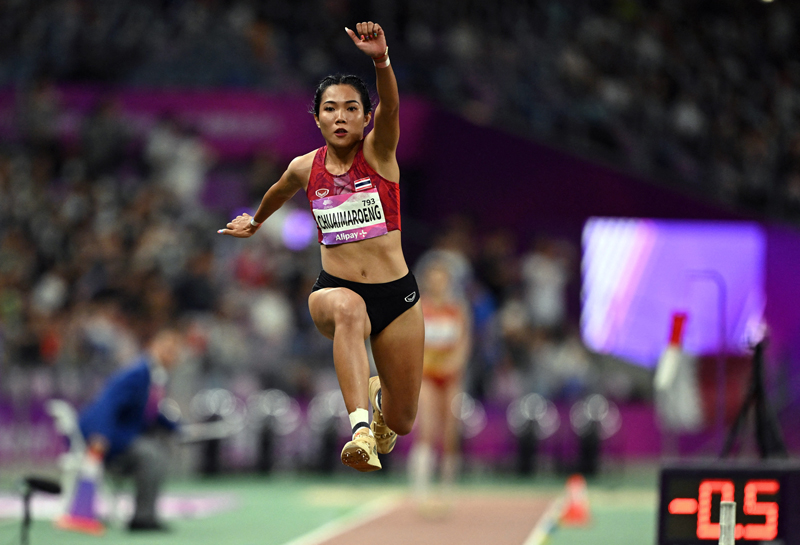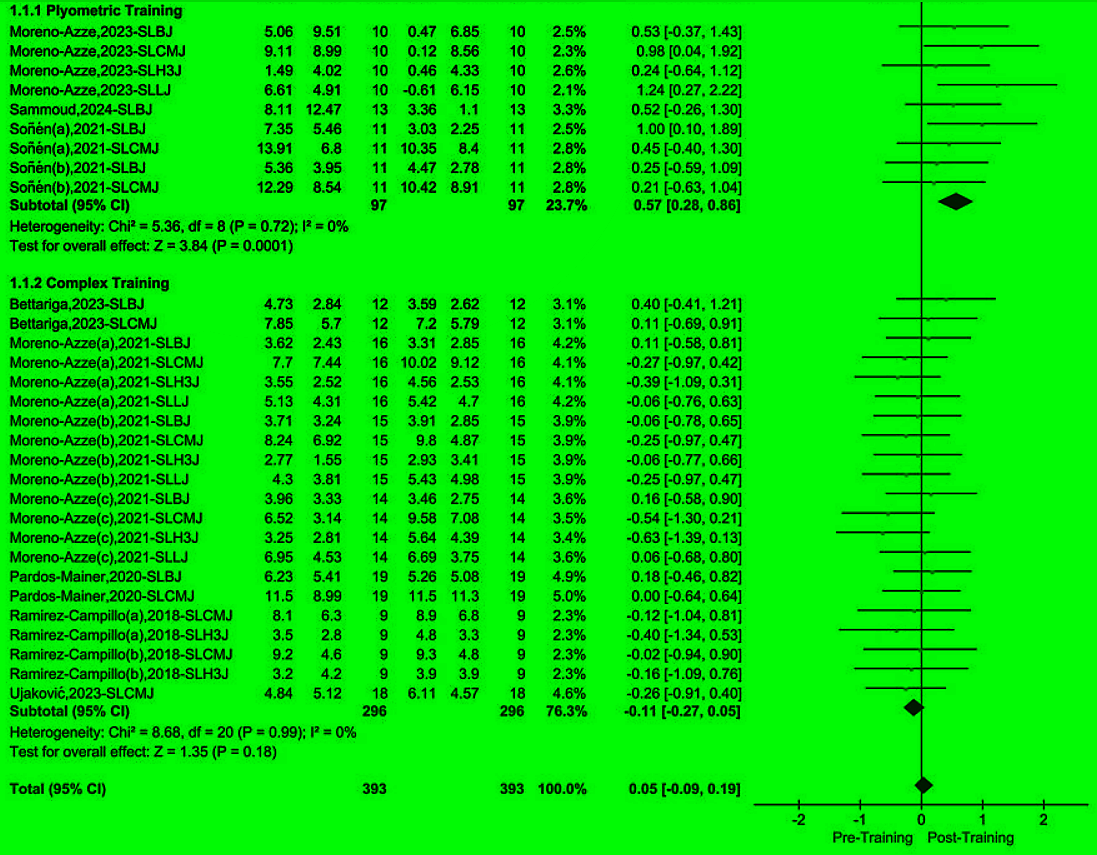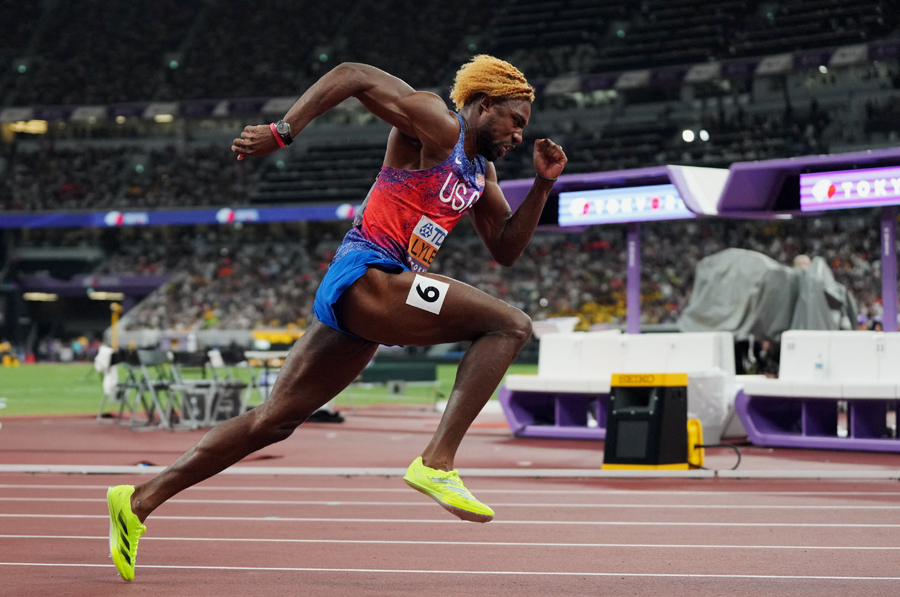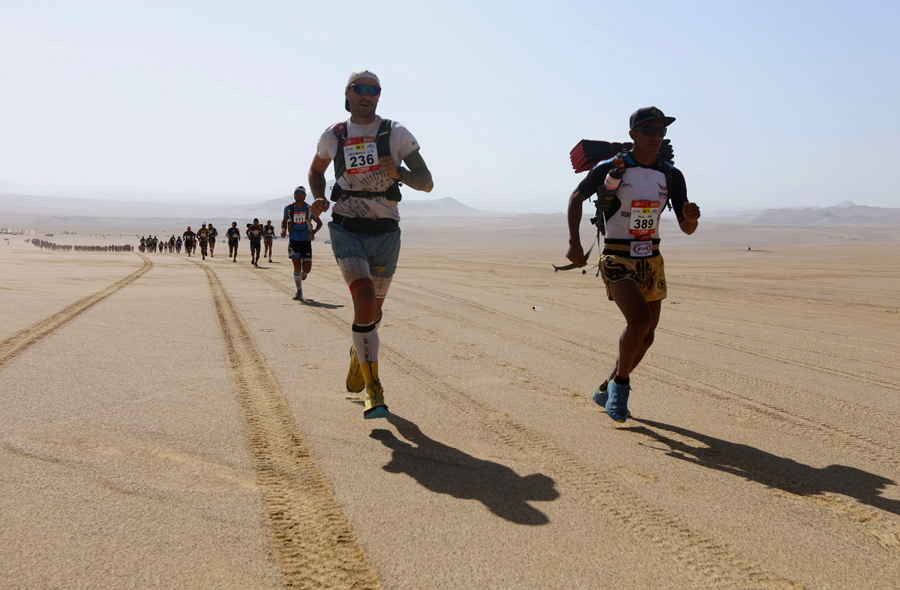You are viewing 1 of your 1 free articles. For unlimited access take a risk-free trial
Eliminating asymmetry: plyometrics vs. combined training
What is the most effective training method for eliminating lower-limb asymmetries in athletes? Andrew Sheaff looks at new research
Physical training is a key component of optimizing performance in sport. Following the widespread acknowledgement that strength training is an essential element of optimizing performance, the implementation of plyometric training has become commonplace in the preparation of athletes of all types. However, when implementing plyometrics, specificity is important. As seen in a previous issue of Sports Performance Bulletin (see this article), unilateral and bilateral strength training have different effects on testing outcomes. Unilateral strength training leads to better outcomes during unilateral tests and bilateral training leads to better performance during bilateral performance. It is reasonable therefore to suspect that this is true of plyometric training as well.
Reducing asymmetry
In most sports, athletes using one leg at a time in an alternate fashion. However, a lack of performance (eg strength) in one leg can’t be fully compensated for by increased performance with the other leg. As such, reducing performance asymmetries in the limbs is a key consideration for improving overall performance. This is especially true with asymmetries that show up when jump tests are carried out because these tests are specific to the activities (eg running, sprinting etc) that athletes engage in most. While there is some research investigating the reduction of limb asymmetries revealed during jump tests, it’s not immediately clear which types of training are most effective for reducing these asymmetries. If we can find a training method that is especially effective at reducing these asymmetries, we are better placed to improve performance.
New research
To try and answer this question, a group of Chinese researchers have carried out a meta-analysis study (a study that pools all the previous data on a topic to come up with more robust conclusions) to provide clarity as to whether plyometric training is an effective way of positively influencing limb asymmetry(1). Furthermore, they wanted to understand which types of plyometrics might have the most favorable impact.
The authors included eight different studies in their meta-analysis, and these studies had a total of 157 participants in total. Limb asymmetry was a defined as ‘differences in jumping performance between the limbs’. As the numerical description of asymmetry can be expressed in different ways, and researchers across these eight different studies had often chosen to describe asymmetry differently, the authors took a standardized approach to doing so. This ensured that comparisons between studies were fair and accurate.
There were several primary points of comparison in the study. First, the researchers sought to compare the impact of plyometric training versus complex training on muscle asymmetry. Plyometric training was defined as any jump training that utilized the stretch-shortening cycle (see video link below), allowing subjects to use elastic energy to create larger forces in less time. Complex training meanwhile was defined as the implementation of plyometric training in combination with heavy resistance training during the same training session. Heavy resistance training exercise performed prior to a set of plyometric exercises has been suggested to enhance subsequent plyometric training therefore, the researchers wanted to know if performing complex training would have a greater impact on changes in limb asymmetry compared to performing plyometric training alone.
Beyond the comparison between plyometrics versus complex training, the researchers also wanted to identify the impact of unilateral versus bilateral training. While it is somewhat intuitive that unilateral plyometric training would have a more positive effect on asymmetry (because each limb is exercised separately), intuitions don’t always match reality. Comparisons between bilateral plyometric training and bilateral complex training were made, as were comparisons between unilateral plyometric training and unilateral complex training.
A final series of comparisons were made about specific types of jumps used. The researchers separately analyzed whether asymmetries in single-leg lateral jump, single-leg broad jump, single-leg countermovement jump, and single-leg horizontal triple jump were affected differently by plyometrics or complex training. As these different types of jumps involve projecting the body in distinct directions, it’s possible that the impact of the different training interventions could lead to diverse outcomes.
What they found
When data was run and the analysis came back, the researchers were able to make some strong conclusions. First, it was plyometric training that had the strongest effect on reducing limb asymmetry. In fact, complex training no had effect on reducing asymmetry at all! This is perhaps surprising considering that complex training (remember, both heavy resistance and plyometric training) is often put forth as a superior strategy for improving performance. However, the data were clear and compelling
The authors hypothesized that this difference can likely be explained by the principle of ‘specificity’. Most of the jump tests involved rapid application of force and change of direction. Performing more plyometric work therefore resulted in better performance in the relevant testing. If strength testing asymmetries were assessed, the outcomes may well have been quite different. Regardless, the message is clear: if jumping asymmetries are present, jump training is the solution!
Unilateral is king
Beyond the impact of plyometrics versus complex training, how the plyometric training is performed matters too. Here, it was the unilateral plyometric training that produced the most benefit. [NB: unilateral plyometric exercises are those where the stretch-shorten cycle takes place with only one foot being in contact with the ground – eg hopping or jumping from one foot and then landing on the other.] In fact, the bilateral training seemed to produce no benefit at all! It seems that once again, specificity continues to be of the utmost importance. Not only does plyometrics need to be the focus of the training program, but it also appears that it is unilateral plyometric training that provides those benefits exclusively. Note however, this does not imply that bilateral plyometric training has no value - just that it may not be effective for reducing limb asymmetries. When we consider that individual limbs will need to be loaded and improved, this outcome makes sense.
Jump types
When it comes to specific jumping types, plyometric training was found to be effective for reducing limb asymmetry during the single-leg lateral jump, single-leg broad jump, single-leg countermovement jump, but not the single-leg horizontal triple jump. While it is not immediately obvious why this is the case, the authors highlighted the horizontal triple jump for its significantly greater technical and strength demands. The other three jumps were all single response jumps where one jump was performed at a time. In contrast, the horizontal triple jump included three consecutive jumps. Due to the challenge of this test therefore, there may have been insufficient training to see improvement over the duration of the included studies.
Encouragingly, limb asymmetry was reduced when unilateral jumps were carried out not just in a forwards direction, but sideways too move forward. The multi-directional nature of this response is encouraging because it implies that unilateral plyometric training can be effective at reducing different types of asymmetries, particularly if they are limited to single response tests.
Figure 1: Overall effect of complex vs. plyometric training on asymmetry
Each line and its midpoint show the effect of plyometrics-only training or complex training on limb asymmetry. The two horizontal diamonds at the bottom of each training type show overall effect. Diamonds wholly to the right of the zero line (ie positive score) show a benefit for reducing asymmetry; diamonds wholly to the left show an increase in asymmetry. Diamonds overlapping the zero line show no overall effect. The plyometric training on its own (top diamond) showed a benefit for reducing asymmetry while complex training showed no overall effect.
Practical advice for athletes
There are several important implications of this study. Firstly, while asymmetries are often present, they can be meaningfully reduced with the right approach. Fortunately, the right approach is a simple one. All you have to do is include unilateral plyometric work to help reduce those differences. As mentioned in the introduction, research covered previously in Sports Performance Bulletin has demonstrated the specificity of unilateral versus bilateral strength training. So if you need to perform during double leg activities, it makes sense to strength training with bilateral exercises. If you need to perform during activities where one leg is used at a time, single-leg strength training makes sense.
The research described in this article further supports this approach, expanding it to included plyometric activities. If you’re competing on one leg, you’ll want to be performing some unilateral work to ensure that you’re able to perform equally effectively while using both the right and left legs. And just to reiterate, you are using one leg at a time in every sport where you have to move yourself forward in space, and that covers just about every sport! Performing unilateral plyometric work will help to keep asymmetries at bay and provide the best opportunity to perform at your peak.
Even if you predominantly perform double leg activities, significant side-to-side asymmetries can create meaningful performance limitations, as well as create exposure to injury. And as the research showed, performing bilateral plyometric activities is unlikely to reduce those asymmetries; you’ll have to perform some unilateral work to get the job done.
Determining whether you are significantly affected by asymmetry doesn’t have to be complicated. Just perform some of the exercises described in the article, such as single leg lateral jump, broad jump, or countermovement jump. If there’s a noticeable difference in height or distance for one side compared to the other, adding some single leg worth is a safe and simple way to work to limit some of those asymmetries. If both limbs are even, unilateral work may be unnecessary for the time being. Just retest every so often to ensure that results continues to hold true.
The positive effects of unilateral plyometric training seem to be present across multiple types of jumps, including jumping up, forward, or to the side. While it’s possible that there will be some positive effect on all types of jumps regardless of the jump used in training, it makes sense to focus on the types of jumps that are most relevant to your goals. And if you’re concerned about an asymmetry that is more pronounced, it makes sense to focus there as well.
Regardless of your goals, unilateral plyometric training is likely to be a useful tool for reducing asymmetries and improving performance. Even adding a small amount is likely a worthwhile investment. Importantly, it doesn’t appear to require a large time investment as the training programs included in the studies only lasted for 8-10 weeks, with 1-2 plyometric exposures per week. It’s an asymmetrical return on a small investment!
References
1. Front Physiol. 2025 Apr 9;16:1551523. doi: 10.3389/fphys.2025.1551523
Newsletter Sign Up
Testimonials
Dr. Alexandra Fandetti-Robin, Back & Body Chiropractic
Elspeth Cowell MSCh DpodM SRCh HCPC reg
William Hunter, Nuffield Health
Newsletter Sign Up
Coaches Testimonials
Dr. Alexandra Fandetti-Robin, Back & Body Chiropractic
Elspeth Cowell MSCh DpodM SRCh HCPC reg
William Hunter, Nuffield Health
Keep up with latest sports science research and apply it to maximize performance
Today you have the chance to join a group of athletes, and sports coaches/trainers who all have something special in common...
They use the latest research to improve performance for themselves and their clients - both athletes and sports teams - with help from global specialists in the fields of sports science, sports medicine and sports psychology.
They do this by reading Sports Performance Bulletin, an easy-to-digest but serious-minded journal dedicated to high performance sports. SPB offers a wealth of information and insight into the latest research, in an easily-accessible and understood format, along with a wealth of practical recommendations.
*includes 3 coaching manuals
Get Inspired
All the latest techniques and approaches
Sports Performance Bulletin helps dedicated endurance athletes improve their performance. Sense-checking the latest sports science research, and sourcing evidence and case studies to support findings, Sports Performance Bulletin turns proven insights into easily digestible practical advice. Supporting athletes, coaches and professionals who wish to ensure their guidance and programmes are kept right up to date and based on credible science.











